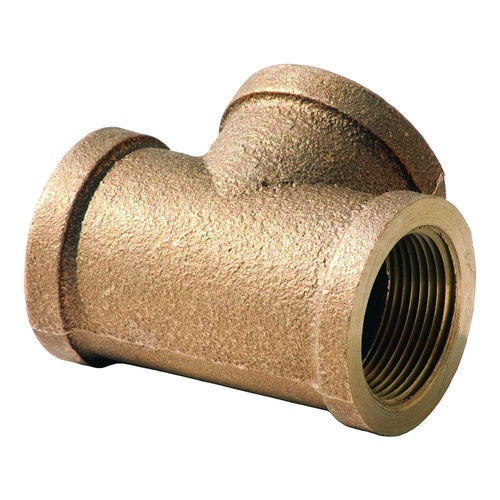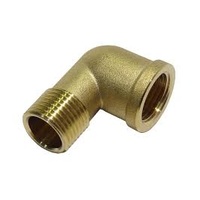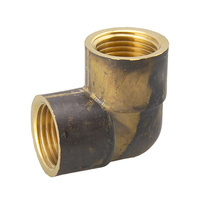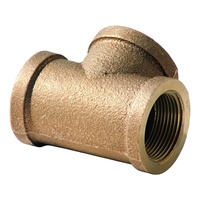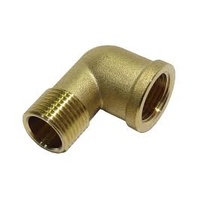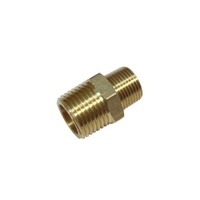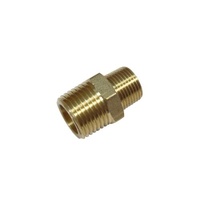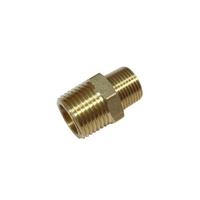A TEE Brass 20mm fitting is a T-shaped plumbing connector used to branch off a 20mm pipe into two directions. This fitting is commonly used in water, gas, or heating systems and is made from brass, which is known for its durability, strength, and corrosion resistance. Below is a detailed overview of the 20mm brass tee fitting.
Key Features and Specifications:
-
Material: Brass:
- Brass is a popular material for plumbing and gas fittings because it is corrosion-resistant, strong, and long-lasting. Brass fittings are particularly suitable for use in water and gas systems due to their ability to withstand high pressures and temperatures.
-
20mm Size:
- The 20mm size refers to the diameter of the pipe that fits into the fitting. This is a common size for residential and commercial plumbing systems, especially for water supply and gas lines.
-
Tee Shape:
- The Tee fitting has three openings: one for the main line and two for branching off to different directions. This allows you to split the flow from a single pipe into multiple directions, which is useful in distributing water or gas to different parts of a system.
-
Thread Types and Connections:
- The 20mm brass tee can come in different connection types such as compression, push-fit, or threaded connections. These are used to connect to 20mm pipes and ensure a secure, leak-free seal.
-
Pressure Handling:
- Brass fittings are designed to handle high-pressure systems, making them suitable for both water and gas installations. The 20mm brass tee is robust enough to handle the demands of residential and commercial applications.
Common Uses:
-
Water Plumbing:
- The 20mm brass tee is frequently used in water supply systems to create a branch from a main pipeline to other fixtures, such as sinks, taps, showers, or appliances.
- It is especially common in household plumbing systems to distribute water from a single pipe to multiple points.
-
Gas Systems:
- This fitting is also useful in gas systems, allowing a single gas line to split and supply multiple appliances, such as stoves, heaters, or water heaters. Brass is commonly used in gas applications because it forms secure and leak-resistant connections.
-
Heating Systems:
- In central heating systems, the brass tee fitting is used to split the flow of hot water to various parts of the system, such as radiators, underfloor heating, or other heating devices. It ensures that hot water can be distributed evenly throughout the system.
-
Irrigation Systems:
- The 20mm brass tee can also be used in irrigation systems to branch off the main water line and distribute water to different parts of the garden or agricultural area.
Installation Considerations:
-
Ensure Proper Fit:
- When selecting a 20mm brass tee, ensure that it is compatible with the 20mm pipe you are using. The fitting should match the pipe’s type and connection (e.g., compression, push-fit, or threaded).
-
Use of Sealant:
- For threaded connections, apply Teflon tape or a thread sealant to the threads to ensure a leak-proof seal. For compression fittings, tighten the compression nut securely to form a strong, watertight connection.
-
Tightening:
- Ensure that all connections are securely tightened but avoid over-tightening, as this can cause damage to the threads or the fitting, potentially leading to leaks.
-
Leak Testing:
- After installation, always perform a leak test to ensure the connections are secure. For gas systems, use a gas leak detector or a soapy water solution to check for bubbles. For water systems, check for any drips or leaks.
-
Compliance with Local Codes:
- Always ensure that the fitting complies with local plumbing or gas codes and regulations. This ensures that the installation is safe and meets industry standards.
Conclusion:
The 20mm brass tee fitting is an essential component in many plumbing, gas, and heating systems. It allows you to easily branch off a single 20mm pipe to multiple directions. Made of durable brass, it is resistant to corrosion and suitable for use in both water and gas lines. When installed correctly, it ensures a reliable, leak-free connection. Always ensure proper installation and perform leak tests to maintain the safety and efficiency of your system.

